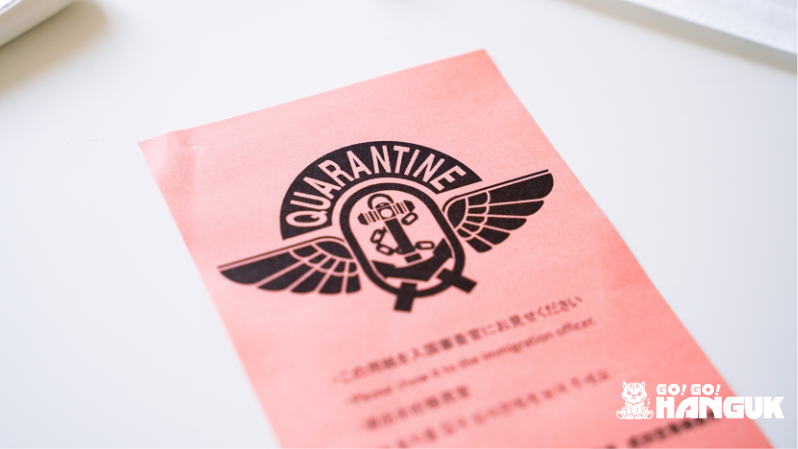Are you going to be away from home for a long time but want to bring your furry friends to South Korea? As a foreign resident, you’ll need to ensure your pet is microchipped, vaccinated against rabies, and has a valid health certificate.
With the right preparation and documents, you can reunite with your pet and enjoy life together in South Korea. Let’s take a look at the 5 important steps on how to bring a pet to Korea!
Here are the 5 steps on how to bring a pet to Korea
1. Veterinary health certification
To bring a pet to Korea successfully, you’ll need to ensure your pet meets the requirements of the veterinary health certification.
A rabies antibody titration test is required for pets unless they are from rabies-free regions and are 90 days old or younger. The results of the rabies neutralizing antibody titer test are valid within 24 months based on the blood collection date, and the titer must be 0.5 IU/ml or higher, administered by internationally accredited test agencies.
Pets of all ages must have an ISO 11784/11785 compliant microchip implanted for identification purposes. The health certificate must contain the ID numbers of implanted microchips and the results of the rabies-neutralizing antibody titration test in order to bring a pet to Korea.
Additionally, consider a health certificate issued by an accredited veterinarian before departure to confirm that your pet is fit for travel and free of contagious diseases.
To bring a pet to Korea, the number of animals allowed to be imported without prior notification is 4 or less.

2. Quarantine process in Korea
Upon arriving at the airport, present all necessary certificates to the animal quarantine officer before proceeding through customs inspection. For pets that are 90 days old or older and can be identified by their microchip implants and meet the requirement of rabies neutralizing antibody titration test, they are released on the day of arrival.
For pets that are younger than 90 days old or from rabies-free countries and can be identified by their microchip implants, they are released on the day of arrival.
When requirements are not met, pets have to be quarantined until they get a microchip implanted by veterinary clinics (animal registration agents) before you can bring a pet to Korea successfully.
Import quarantine is carried out at an animal quarantine facility located at the entry airport or port. If there is no such facility at the airport or port, the animals will be transported to a nearby animal quarantine facility.
3. Book a pet-friendly flight
When booking a pet-friendly flight, start by checking the airline’s pet policies, which vary depending on your pet’s size and travel requirements. Most airlines offer in-cabin travel for small pets, while larger pets must travel in the cargo hold. It’s important to check for any breed restrictions and fees before trying to bring a pet to Korea.
To be able to bring a pet to Korea during your preferred travel period, try to book your flight early, as airlines often limit the number of pets allowed per flight. Just a quick reminder to check in with your student coordinator about the school start dates as your student visa and arrival date will depend on those dates, so it’s good to confirm before booking a flight.
As far as possible, opt for direct flights to minimize stress for your pet and ensure you have the right pet carrier that fits under the seat for in-cabin pets or meets the cargo requirements for larger animals. On the day of the flight, arrive early to check in your pet and go through security. Make sure to prepare your pet by making sure they are healthy, well-fed for the journey.
After landing, pick up your pet from the designated area, and follow any customs or quarantine procedures.

4. Book a pet-friendly accommodation
To bring a pet to Korea, securing pet-friendly accommodation is crucial for a hassle-free stay. In South Korea, larger hotel chains may offer pet-friendly rooms, but smaller guesthouses and Airbnb listings often have more flexible policies. Be sure to verify pet size limits, as many properties only accommodate small pets, and check for any additional pet fees (usually KRW 20,000 to KRW 50,000 per night).
For a long-term stay in South Korea with pets, look for pet-friendly apartments using platforms like Zigbang and Dabang, which allow you to filter for pet-friendly options. Many apartment complexes offer amenities such as pet washing stations, dog parks, and proximity to green areas. It’s important to confirm pet policies with landlords, including size and breed restrictions, and check for any additional pet deposits or fees. Additionally, consider the surrounding neighborhood for access to pet-friendly cafes, parks, and pet care services, ensuring a comfortable environment for your pet.
Please be aware that, school dorms do not allow pets due to regulations around cleanliness and safety.
Apart from the paperwork to bring a pet to Korea, booking a pet-friendly accommodation is also important to ensure a conducive environment for your pet so always confirm the property’s pet policy before booking!
5. Traveling with pets in Korea
In South Korea, pets are generally allowed on public transportation, but there are specific rules. On the Seoul Metropolitan Subway and KTX trains, pets must be in a carrier, with a weight limit of around 10 kg for smaller pets. Larger pets are not allowed on these services. It’s best to check with the train or subway company in advance for specific pet regulations and carrier size requirements.
Taxis are generally more flexible, and many allow pets, however, it is good to note that pets must be in a carrier, and typically, only small dogs under 3kg that can fit in a carrier are permitted onboard. Please always confirm with the driver before boarding, as an additional fee may apply. Alternatively, pet taxis are available, but they use a different booking system.
City buses typically do not allow pets, except for service animals or smaller pets in carriers. For longer intercity bus trips, some companies may allow pets in carriers, but it’s important to confirm the policy beforehand.
Nonetheless, South Korea has numerous pet-friendly spaces like the Han River Parks where pets can roam, though they must be on a leash. Many pet cafes, especially in areas like Gangnam and Hongdae in Seoul, welcome pets. Overall, public transport options for pets in Korea are manageable with proper planning, carrier use, and adherence to specific policies.
These are 5 important points when considering to bring a pet to Korea. Please check with the Animal and Pet Quarantine Agency for other detailed information to help you bring a pet to Korea!
If you wish to find out more about living and studying in Korea, be sure to contact us or keep updated on our Go! Go! Hanguk blog for more content.















